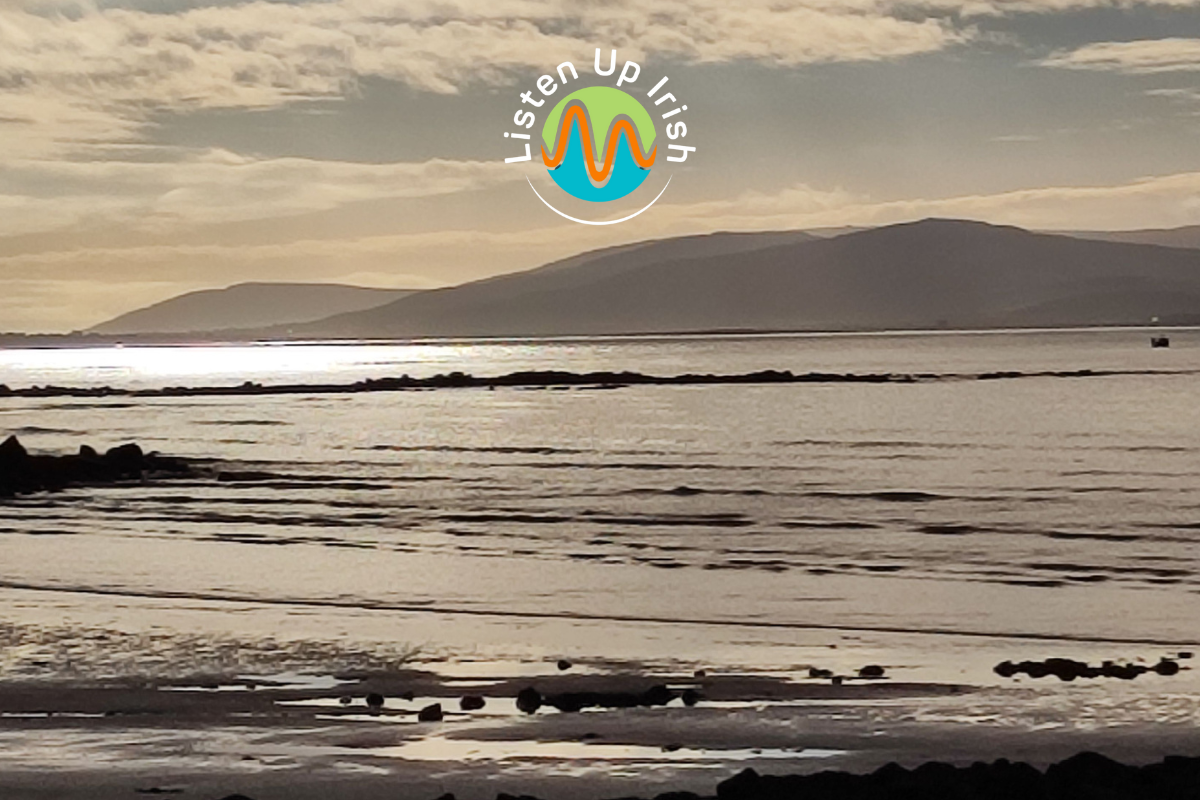Written Irish: Cracking the code
Learning to read in Irish can be a little daunting. There are some letter combinations in Irish that don't occur in English, e.g. 'bh'; 'gh'; 'fh'; and many complex-looking vowel combinations: 'aoi'; 'ea' etc.
The written form of a language is just a code, however.
And to learn to read that language, you need to crack the code!
Read the tongue twister in the video above and listen to it at the same time.
By doing this you will be starting to connect letters/letter combinations with particular sounds in Irish.
(You can slow the video down by clicking on the cogwheel on the bottom).
Letters don't always represent the same sounds between languages
The fundamental point about any written language is that letters, or combinations of letters, represent sounds and...
the letter combinations which represent a particular sound in one language do not necessarily correspond to that particular sound in another language.
There are also letter combinations in Irish which are used to represent certain sounds which do not exist in the English language.
Starting to crack the code
The letter combinations 'bh' or 'mh' in Irish are used to represent those sounds which are written with the letters 'v' or 'w' in English. (Which of these sounds it will be will depend on a couple of factors including the particular dialect of Irish being spoken, or what other letters surround the 'bh' or 'mh').
If you know how to say the names 'Niamh' (pron. 'Nee-av') or 'Siobhán' (pron. Shov-awn) then you've already started to crack the code as to how the letter combinations 'bh' and 'mh' sound in Irish.
Similarly, if you know how to say the name 'Aoife' then you already know that the letters 'aoi' can be used to represent a sound similar to that represented by the letters 'ee' in English.
Listen and read to break the code
Listening and reading at the same time is the way to crack the code, and to connect the written language with how it should sound. In the short tongue twister above you can already start to make connections between letter combinations in Irish and how they should sound.
For example, the rabhlóg contains the line:
Ní fhaca mé an bacach / I didn't see the beggar
Ní fhaca mé / I didn't see
When you listen to this line you will notice that the 'fh' of 'fhaca' is silent.
Anytime you see 'fh' in Irish it's silent.
This is cracking the code!
As another example:
An bhfaca tú an bacach, nó an bhfaca tú a mhac?
Did you see the beggar, or did you see his son?
You'll notice that there are a lot of 'w' sounds in this line - but the letter 'w' is not part of the Irish alphabet.
Can you figure out the letter combinations which are used to represent the 'w' sounds in this line? (There is more than one).
Break words down into separate sounds
In order to become really familiar with a new code lots of reading and listening are required. Start to break words you already know in Irish into separate sounds, in order to connect the letter combinations in Irish with the sounds that they represent. Take, for example, the letter combination 'adh' might look challenging - but if you think of some words with this letter combination that you already know how to say you can use that knowledge to figure out how this particular letter combination should sound. Let's suppose that you already know the words 'Tadhg' (a man's name) and 'fadhb' (a problem). Split these words into their separate sounds.
Tadhg: This word can be split into a 't' sound followed by the sound represented by 'eye' in English and a 'g' sound at the end.
Fadhb: This word can be split into an 'f' sound, followed by the sound represented by 'eye' in English and a 'b' sound at the end.
In this way it becomes clear that 'adh' in Irish represents a similar sound to 'eye' in English.
How fast can you say it?
Give the tongue-twister above a go. If you can say it in under 10 seconds give yourself a pat on the back! You'll have done a better job than Joe! By the way Joe Ó Fatharta is the narrator on the All About Irish Learn Irish Through Literature and Learn Irish Through Poetry courses. These courses are a great way to get some reading and listening practice in Irish. If you are just starting to learn Irish however, be sure to check out the All About Irish Beginner Irish course. This is an 8 week programme and the best way to learn Irish online! After Beginner Irish you can continue on to the intermediate level courses: Beyond Beginner 1 and Beyond Beginner 2. If you would like to get a recognised qualifiation in Irish then make sure to check out the comprehensive All About Irish TEG A2 course. (TEG stands for Teastas Eorpach sa Ghaeilge / The European Certificate in Irish).
Cúpla rabhlóg eile
If you enjoyed this tongue-twister then try out these other rabhlóga: Bhí bean ag Joe and Lá ag baint mhóna.




